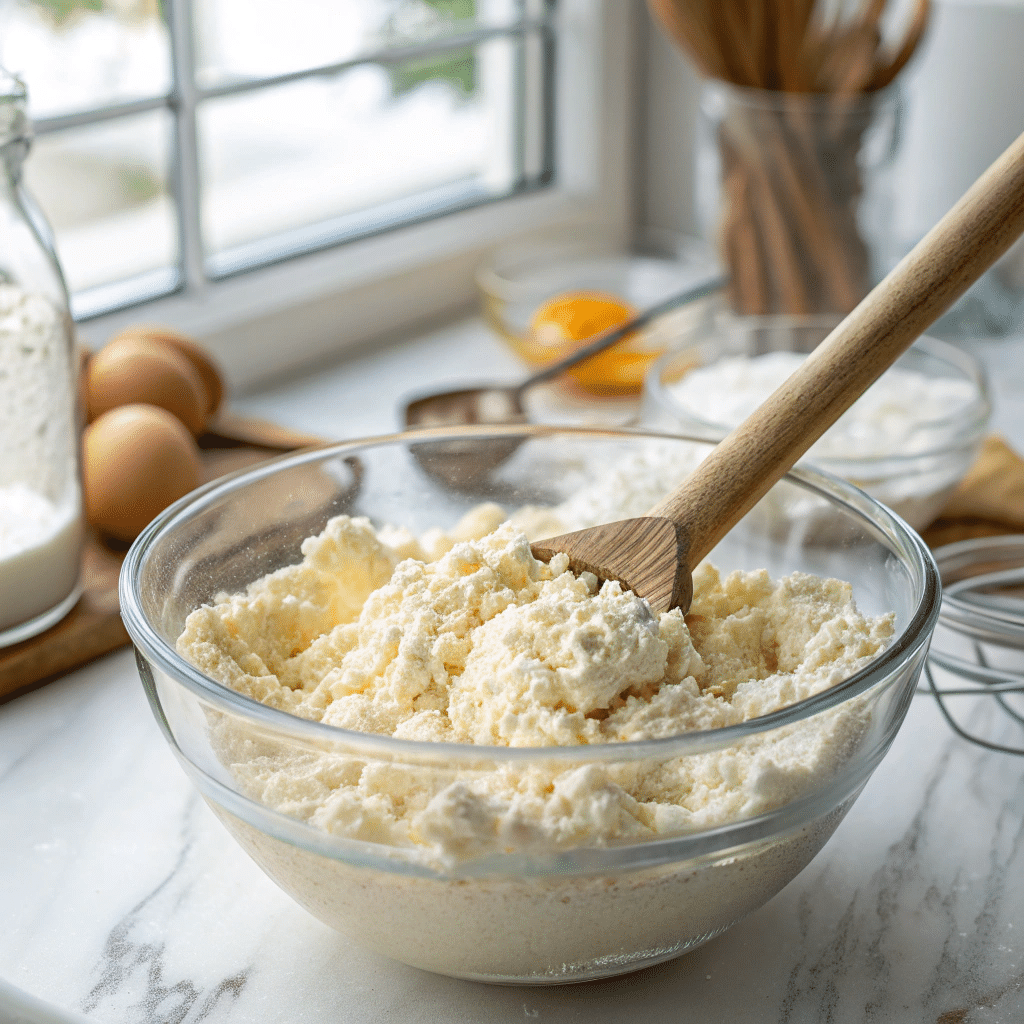There’s something about the smell of pizza baking that feels like home. Growing up, pizza night was a big deal—always homemade, always messy, always fun. These days, as a mom looking to balance flavor with nourishment, I’ve found myself reinventing those family nights with a healthier twist. Enter: almond flour cottage cheese pizza crust.
This crust started as a little experiment—what if I skipped the refined flour and gave almond flour a shot? And could cottage cheese really act as a base ingredient? It sounded strange at first, but after a few test runs (and some honest kid feedback), I landed on a crust that was not just “healthy enough”—it was genuinely good.
Print
Why Almond Flour Cottage Cheese Pizza Crust Is the Smart, Delicious Choice
- Total Time: 30 minutes
- Yield: 1 10-inch crust 1x
Description
This almond flour cottage cheese pizza crust is gluten-free, protein-rich, and crisps beautifully. Easy to customize with herbed or cheesy variations, it’s a quick and healthy option for pizza night.
Ingredients
1 cup almond flour
½ cup cottage cheese (drained if wet)
1 egg
½ tsp baking powder
Pinch of salt
Optional: ¼ cup shredded mozzarella or herbs (see variations)
Instructions
1. Preheat oven to 400°F (200°C) and line a baking sheet with parchment.
2. In a bowl, mix almond flour, cottage cheese, egg, baking powder, and salt until a dough forms.
3. Press dough into a 9–10 inch circle on the prepared sheet, about ¼-inch thick.
4. Bake for 12–15 minutes until edges begin to brown.
5. Remove, add desired toppings, and return to oven for another 8–10 minutes.
6. Cool slightly, slice, and serve.
Notes
Drain cottage cheese for a firmer dough.
Add herbs or cheese for extra flavor.
Store leftovers in fridge up to 3 days.
Reheat in oven or skillet for best texture.
- Prep Time: 5 minutes
- Cook Time: 25 minutes
- Category: Pizza
- Method: Baking
- Cuisine: Gluten-Free
Nutrition
- Serving Size: 2 slices
- Calories: 220
- Sugar: 1g
- Sodium: 190mg
- Fat: 16g
- Saturated Fat: 5g
- Unsaturated Fat: 10g
- Trans Fat: 0g
- Carbohydrates: 6g
- Fiber: 2g
- Protein: 11g
- Cholesterol: 55mg
Table of Contents
In This Recipe
Nutritional Benefits of Almond Flour Cottage Cheese Pizza Crust
This crust isn’t just about cutting carbs; it’s about adding value. Almond flour brings heart-healthy fats, vitamin E, and magnesium. Cottage cheese adds a big protein punch, calcium, and moisture that binds the dough together beautifully. Together, they make a balanced base that’s satisfying but still light.
Here’s a quick nutritional snapshot for one serving of the crust:
| Nutrient | Per Serving |
|---|---|
| Calories | 190 |
| Protein | 12g |
| Carbs | 5g |
| Fat | 14g |
This delicious almond flour cottage cheese pizza crust is now a weekly go-to in our house. It’s the base of my cottage cheese gluten-free pizza crust, and it works beautifully with our brown bag lunch ideas for picky eaters when repurposed for mini lunchbox pizzas.
How the Ingredients Support Texture and Taste
Almond flour’s nuttiness pairs surprisingly well with savory toppings. The fine grind creates a soft, flexible dough that bakes up sturdy and golden. Cottage cheese, while mild, adds moisture and protein that help everything hold together. The result? A balanced, flavorful almond flour cottage cheese pizza crust that’s easy to love.

Making the Base for Almond Flour Cottage Cheese Pizza Crust Step-by-Step
Let’s get into the how-to. This almond flour cottage cheese pizza crust isn’t just wholesome—it’s wonderfully simple to make. No rising. No yeast. Just one bowl, a few minutes of mixing, and you’re ready to roll. It’s a perfect entry point if you’re newer to gluten-free or high-protein baking.
Can I Use Almond Flour for Pizza Crust? Absolutely—Here’s How
Almond flour is a great base for low-carb, gluten-free baking. It’s fine, tender, and holds together well with the right binders. For this crust, you’ll need:
- 1 cup fine almond flour
- ½ cup cottage cheese (drained if very wet)
- 1 egg
- ½ tsp baking powder
- A pinch of salt
Mix everything in a medium bowl until it forms a soft dough. Line a baking sheet with parchment paper and gently press the dough into a 9–10″ circle. Aim for ¼-inch thickness—thin enough to crisp but strong enough to hold toppings.

Pop it into a preheated 400°F oven for 12–15 minutes, until the edges begin to brown. Then remove it, top it however you like, and return it to the oven for another 8–10 minutes.

This crust is the basis for many favorites on our table, like the one in our Cottage Cheese and Egg Pizza Crust recipe or topped creatively like in our Natural Mounjaro recipe.
Can I make pizza dough with cottage cheese? Practical tips
Yes, and it’s brilliant. Cottage cheese brings moisture, richness, and protein—all with very little prep. Use full-fat for the best texture, and if it’s too wet, drain it using a cheesecloth or fine mesh sieve for 10–15 minutes.
For extra browning, brush the edges of your almond flour cottage cheese pizza crust with olive oil before the second bake. Want even more crunch? Use a pizza stone or bake directly on a steel sheet.
In the next part, we’ll compare flours and help you answer: what’s the best for nutrition and crisp?
Understanding Flour Choices for Pizza Dough, crafted to blend keyword relevance, readability, and SEO flow. It includes two internal links, keeps keyword density optimal, and addresses both health and crispiness concerns tied to your focus keyword.
Understanding Flour Choices for Pizza Dough – Health and Texture Insights
One of the most common questions in pizza making is: What’s the healthiest flour for pizza dough? For anyone exploring better alternatives, the answer often starts with almond flour. It’s why this almond flour cottage cheese pizza crust is gaining popularity—not just among keto eaters but among families looking for real, whole-food ingredients.
What Is the Healthiest Flour for Pizza Dough? Let’s Break It Down
Almond flour is naturally low in carbohydrates and high in fiber, vitamin E, and magnesium. Unlike white flour, it won’t spike your blood sugar and offers sustained energy. But how does it compare to other healthy options?
| Flour Type | Key Benefit |
|---|---|
| Almond Flour | High in protein, gluten-free, rich in fats |
| Chickpea Flour | High in fiber, dense texture |
| Whole Wheat Flour | More fiber than white, moderate gluten |
| Coconut Flour | Very low carb, highly absorbent |
Of all of these, almond flour blends the most easily with cottage cheese, which is why almond flour cottage cheese pizza crust gets such rave reviews. You can find a version of this logic applied in our pink salt trick, where nutrient-rich swaps make flavor and wellness go hand in hand.
What Is the Best Flour for Crispy Pizza Crust? Hint: It’s Not Always Gluten-Based
A crispy crust almond flour cottage cheese pizza crust depends on several things: the flour’s protein content, moisture balance, and how you bake it. Traditional high-protein flours like bread flour work because they trap air and create chew. But that doesn’t mean crispy is off the table for gluten-free crusts.
With almond flour, crispiness comes from the fat content and how thinly the crust is pressed. Using a pizza stone, parchment, or flipping it halfway through baking helps create that satisfying bite.
Recipes like our cottage cheese crust show how gluten-free doesn’t have to mean soggy or soft.
In the next section, we’ll dive into exactly how almond flour behaves in the oven—and how to perfect your browning game.
Getting That Perfect Brown and Crisp from Your Almond Flour Cottage Cheese Pizza Crust
There’s nothing like the satisfaction of pulling a pizza from the oven with a golden, crisp crust. With traditional flours, browning happens naturally—but if you’re working with almond flour, it takes a few extra tricks to get that same beautiful result. Still, it’s absolutely doable, and this almond flour cottage cheese pizza crust delivers that edge-to-center finish with just the right tweaks.
Does Almond Flour Brown in the Oven? Yes—With a Few Easy Adjustments
Almond flour contains natural fats that encourage browning, but without gluten or starch, it behaves differently than wheat flour. Here’s how to coax out that crisp golden crust:
- Preheat your oven to 400°F or 425°F
- Bake the crust directly on parchment over a hot baking stone or steel
- Brush the outer edge with olive oil before baking
- For a darker tone, mix in 1–2 tablespoons of parmesan or shredded mozzarella
Thanks to the cottage cheese, moisture from the dough helps steam and bake the base evenly. It’s one reason this almond flour cottage cheese pizza crust has become a favorite for those seeking both structure and color.
Recipes like our pink salt diet recipe benefit from the same oven-technique logic—let heat and fat work together for a satisfying finish.
Avoid Soggy Crust and Store It Right
If your crust turns out soggy, try baking it a few minutes longer before adding toppings. Too dry or cracking? Add a tablespoon of extra cottage cheese or a teaspoon of olive oil to the dough.
Store leftovers in the fridge up to 3 days, then reheat in the oven or skillet to maintain that crisp texture. For make-ahead ease, freeze the prebaked crust flat—just like our strategy for sous vide chicken thighs.
Now, let’s move into a couple of delicious crust variations that take your pizza nights to the next level.
Herb-Infused Twist on Almond Flour Cottage Cheese Pizza Crust
When pizza night needs a flavor refresh, a simple twist can take things from ordinary to wow. This herb-infused version of the almond flour cottage cheese pizza crust adds big flavor with minimal effort. The result? A crust that’s aromatic, savory, and perfect for Mediterranean toppings or veggie-loaded creations.
Start with your standard dough base. Then stir in these dried herbs before shaping:
- 1 teaspoon oregano
- ½ teaspoon garlic powder
- ½ teaspoon basil
- Optional: pinch of crushed red pepper or rosemary
As the crust bakes, these herbs release their oils and bring out a warm, inviting aroma. The garlic and basil give it that classic Italian pizzeria flavor, while oregano adds depth. And because almond flour browns more evenly with oil-based additions, the final result is both golden and crisp.
Pair this herby base with toppings like roasted zucchini, feta, black olives, or caramelized onions. It also works beautifully with protein-packed combos like grilled chicken or cottage cheese dollops for extra richness.
Want to take it further? Brush the edges with a little olive oil and dust with parmesan before baking. That adds even more color and texture—just like we do in savory dishes featured in our natural mounjaro recipe.
This variation still gives you all the benefits of a gluten-free, low-carb option, but with the added bonus of big taste. If you’re already a fan of the classic almond flour cottage cheese pizza crust, this herby upgrade might just become your new go-to.
Next, let’s explore the cheesy version that melts right into your meal plan.
Cheesy Almond Flour Cottage Cheese Crust for a Richer Finish
For anyone who loves that slightly chewy, golden edge on a great pizza, this variation is for you. By folding cheese directly into the dough, your almond flour cottage cheese pizza crust gets an extra layer of flavor—and a gooey, crispy texture that’s irresistible.
To make it, prepare the base dough, then add:
- ¼ cup shredded mozzarella
- 2 tablespoons grated parmesan
- Optional: 1 tablespoon nutritional yeast for a savory kick
Mix everything together until the cheese is evenly distributed. The added mozzarella creates stretch and softness, while the parmesan helps with browning. This crust bakes up with a golden edge and a light chew—perfect for anyone who prefers a slightly thicker, more indulgent bite.
Top it simply with marinara, basil, and more cheese for a classic Margherita feel, or go bold with sausage, mushrooms, and red onion. It’s sturdy enough to hold up under heavier toppings but still keeps the grain-free, low-carb appeal.
Need a balanced meal idea? This variation pairs well with crisp salads or steamed veggies, like the ideas in our purple peel recipe for fresh, bright flavor contrast.
Whether you’re cooking for kids or impressing dinner guests, this cheesy take on the almond flour cottage cheese pizza crust adds that extra something that makes everyone reach for a second slice.
FAQs
1. Can I use almond flour cottage cheese pizza crust ?
Yes, it makes a great gluten-free and low-carb alternative. It’s packed with healthy fats and protein and creates a tender texture when combined with eggs or dairy. Just keep in mind it’s more delicate than wheat-based doughs.
2. Can I make pizza dough with cottage cheese?
Definitely. It adds creaminess, moisture, and protein. When paired with grain-free flours, it helps form a cohesive, pliable dough. For the best consistency, use full-fat and drain excess liquid before mixing.
3. What is the healthiest flour for pizza dough?
Almond flour is a strong contender, offering vitamins, minerals, and healthy fats. Other good options include whole wheat, chickpea, and coconut flours, depending on your dietary goals and taste preferences.
. What is the best flour for crispy pizza crust?
Bread flour is ideal for gluten-based doughs. For grain-free versions, a thinly spread almond or chickpea base, baked at high temperature on a stone or steel, yields the best results.
5. Does almond flour brown in the oven?
Yes, but it benefits from added oil or cheese for enhanced color. Baking at 400°F+ and using a preheated surface helps it develop a golden, slightly crispy edge.
Final Conclusion for almond flour cottage cheese pizza crust
Healthy pizza doesn’t have to be bland or complicated. This almond flour cottage cheese pizza crust crust recipe proves you can make something nourishing and flavorful with simple ingredients and a short prep time. It’s naturally gluten-free, kid-approved, and flexible enough to support all your favorite toppings.
If you’re looking to lighten up pizza night or add more variety to your weekly meals, give this almond flour cottage cheese pizza crust a try. It’s wholesome, satisfying, and perfect for home cooks who want both taste and balance.
We’d love to see your twist—share your creations with us at letscookeasy.com and keep the flavor inspiration going.

